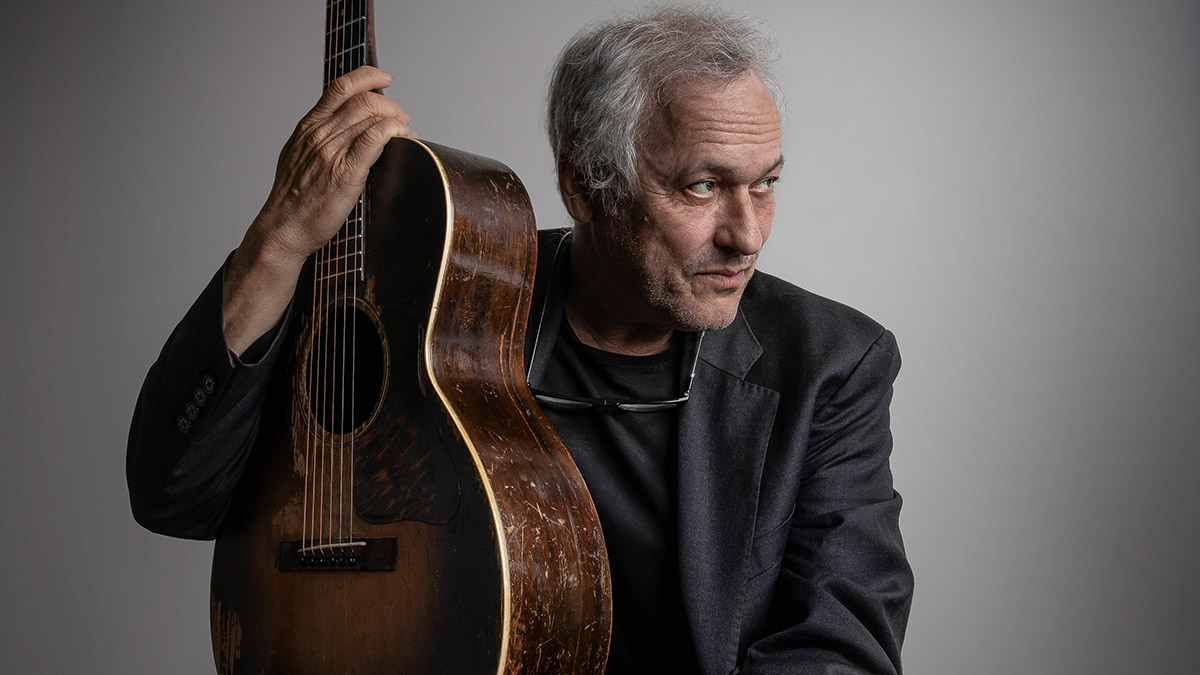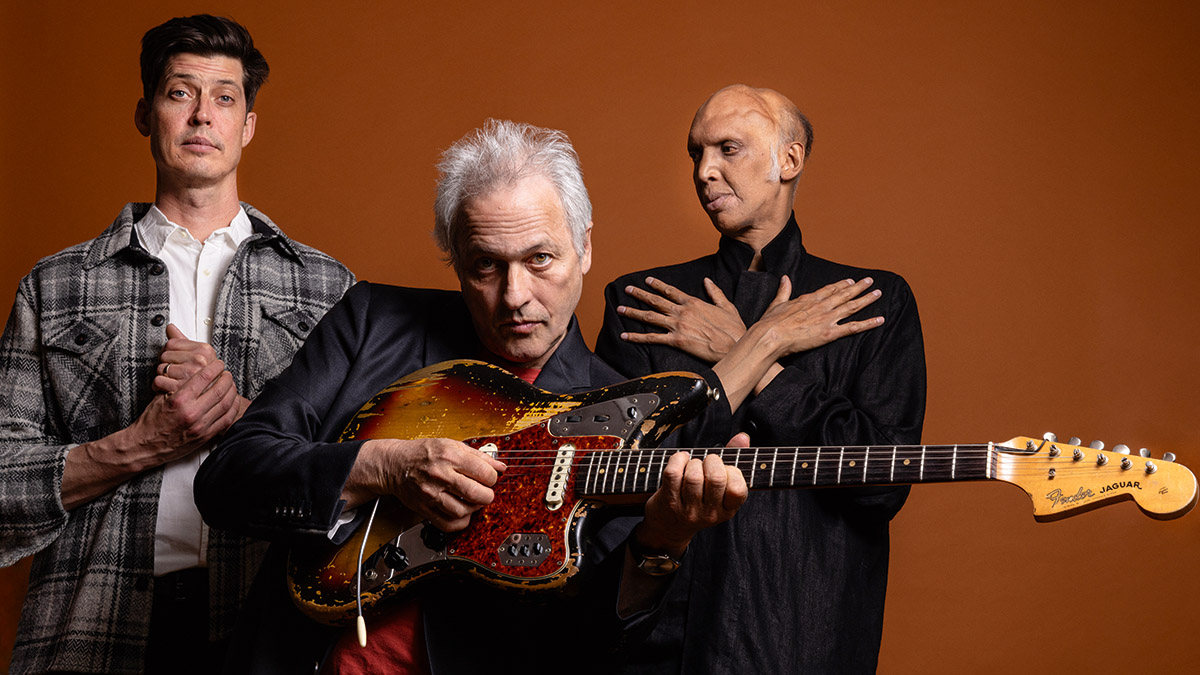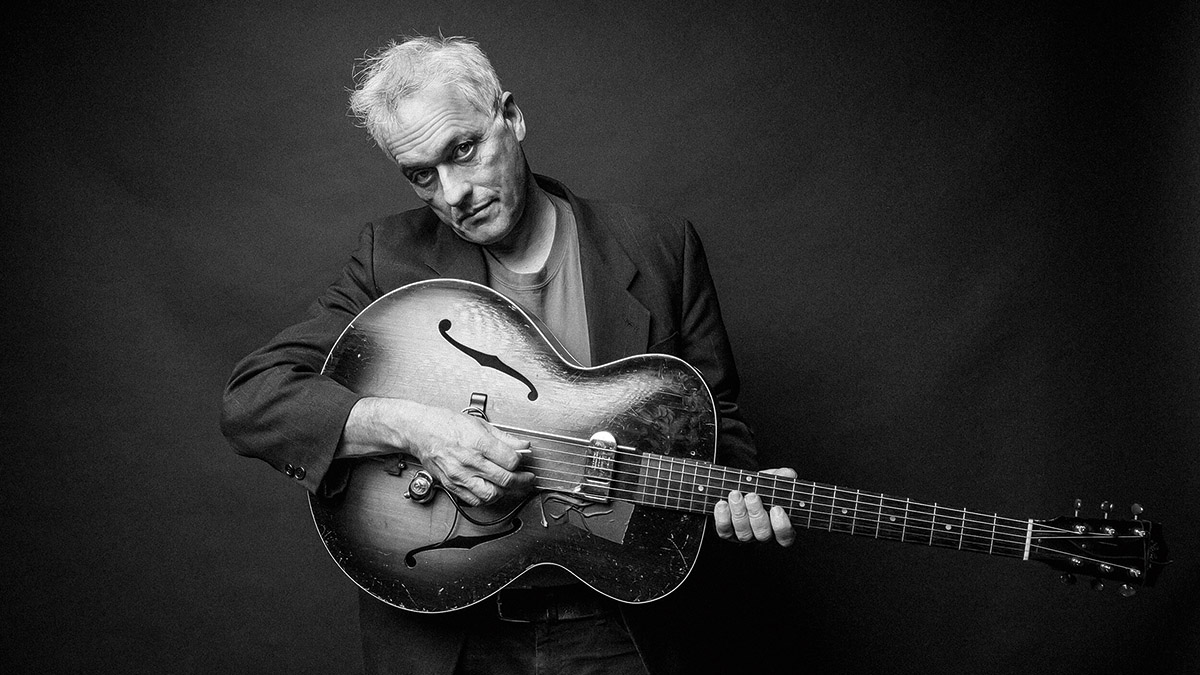
Though he doesn’t think of himself as such, Marc Ribot is a session ace. He’s played sideman to Tom Waits on records such as Rain Dogs (1985) and Franks Wild Years (1987), lent a hand to Elvis Costello on Spike (1989), and Robert Plant & Alison Krauss on Raising Sand (2007), and even appears on the Black Keys’ Attack & Release (2008), just to name a few among the hundreds.
Most recently, Marc has injected his angular riffage and jagged yet buttery solos into Ceramic Dog’s mix, with whom he’s been recording since 2008’s Party Intellectuals. As for the latest, 2023’s Connection, released on Knockwurst Records, it’s a bit of Ribot-driven bliss, which runs the gamut of free jazz improvisation, off-the-wall, tribal rhythms, and straight-up rock and blues jams.
While traveling in a van en route to gig in Philadelphia in support of Connection, Ribot dialed in with Total Guitar to talk new music, working with Tom Waits, and the unique gear and approach that inspired it all…
Connection is a tour de force in genre exploration. How did you approach it?
“I picked up my guitar, just like yesterday! But on this record and the touring I’ve been doing so far since the summer of 2023, I’ve mainly used my [Gibson] SG. I’ve regressed to my childhood in that way. It’s like I’m back in my early teenage years.”
What spurred you to break the Gibson SG out?
“Well, you were kind of saying the record is eclectic, but to us, we felt like it sounded like a rock album. So, I wanted access to more metal and rock sounds. It’s not traditional to some, but it’s our version.”
Tell us about the title track Connection. Aside from the SG, what went into it?
“That’s a lot to ask of my poor memory! But I usually use an [Analog Man] King of Tone for some extra distortion. I ran that tune through that, and now that I think of it, Connection was recorded with my [Fender] Jaguar.”
Did any other pedals play a significant role in your signal chain?
“I also had a newer [EHX] Memory Man [Analog Delay], which I’m a big fan of. I like it as a preamp, even if the echo isn’t a very quick slapback. I’d advise people to go with the vintage ones. But they always break during gigs, so pedals can be an expensive habit. The new ones have a titanium crystal, and are more roadworthy, but the sound of the original is unmatched.”
Soldier in the Army of Love has some pretty district flourishes. How did you come up with that?
“Truthfully, I don’t have a process. I sit around, and it usually takes me days to come up with anything. I’m lazy! It’ll take me 10 hours to do one hour’s worth of practising! But I do wind up sitting with my guitar, I’ll play shit, and next thing you know we’ve got a hit record!”

As far as tone goes on, what gear choices impacted things?
“It’s more about playing really loud, and I think I tuned down to D. I tend to use heavy strings, like 0.011s. But sometimes, and this was the case in this instance, I go with light tops and heavier bottoms, and I pair it with that King of Tone pedal. And then I ran through a [Fender] Deluxe Reverb and cranked the fuck out of it!”
And how about your elongated solo on Order Of Protection?
“Order Of Protection originally had lyrics, but we decided that it was in the best interest of society to leave the lyrics out. People don’t get the concept of unreliable narrators these days, so if you say horrible, disgusting stuff, that automatically means you’re horrible and disgusting, rather than trying to draw an accurate picture of a horrible and disgusting person.
“Anyways, it wound up as an instrumental, which made the world a better place! I approached it from a rock, blues, and jazz perspective, which I guess makes sense. With the solo, I was trying to convey the same message that the lyrics would have. I’m not sure it worked, but that was the idea of it, anyway.”
How would you measure what you’re doing now compared to recording Rain Dogs with Tom Waits?
“Nothing’s changed. I still go into the studio, listen to the song, catch the vibe, hear the words, and think, ‘Okay, what kind of guitarist would be playing along with that? What does this need?’ Sometimes, I hate it, and if I do, I’ll say, ‘How can I destroy it?’ And if I can’t destroy it, I’ll think, ‘How can I make this something I wouldn’t laugh at?’”
Tom thinks of the guitar as a character in a play, you know? It’s the voice of one of the characters in a story he’s writing
And what’s the secret to doing what you’ve just said on those classic Tom Waits songs like Clap Hands and Jockey Full Of Bourbon?
“With Tom, he thinks – at least, when I work with him – kind of dramatically. He thinks of the guitar as a character in a play, you know? It’s the voice of one of the characters in a story he’s writing. So, if the guitar is the voice, and let’s say that voice is very dry, with no reverb, that implies someone is talking closely or maybe in your ear at a bar.
“But what if they’re yelling? Is there a band playing in that bar? If so, what are they playing? So, I had to think dramatically about those songs and on Rain Dogs. I’d think, ‘Okay, what country are we in? And what decade is it? What side of town are these people on?’ Those things influenced what pickups I used, how much reverb, for example, I used, and what sort of reverb I used.”
What was your setup like while working with on Rain Dogs and Franks Wild Years?
“Poverty accounted for many of my choices back then! And God, this is terrible, but I had this old Tele, and I can’t remember the name of it. It was a knockoff, fake thing – I believe it was by ESP. But that’s the guitar I used on Rain Dogs and Franks Wild Years. It was made in Japan, and it was awful but also beautiful. It was a knockoff and not a Fender, but looking back, maybe it was a strong fake Tele.”
Keith Richards also played on Rain Dogs. Did you collaborate with him during those sessions?
“No, not at all. We might have been in the studio together once, but not working together. I literally walked in one day as Keith was leaving. I met him later in life, and I’ve always been a huge fan of his playing, but no, there was no collaboration. Keith maybe did some basic tracks that I’m on for Rain Dogs, but I would have come in after to do overdubs. But there were plenty of instances where we weren’t even on the same tracks.”

How about your signal chain, specifically on Waits’ 1987 song Hang On St. Christopher?
“Back then, I’d just plug into a lot of cheap pedals and hope for the best. That hasn’t changed much, but with my EHX and Analog Man stuff, I’ve upgraded some. But I still have some things from the old days – primarily those focused on true bypass. Most of the nameplates have come off over the years, but they’ve served me well. I like dealing with things that could plausibly come through a distorted Deluxe Reverb.”
Pushing forward to your work on Robert Plant & Alison Krauss’s Raising Sand, how had your rig progressed?
“Not by much! I had my ’60s Fender Jag by then; I believe it’s a ’62. And I had gotten into the EHX stuff by then. By that time, I also had my Lehle [Mono] Volume Pedal, the one all the pedal steel players use. But the approach stayed the same because I always try to think about what sonically blends and sticks out.”
And with Robert and Alison, what stuck out most?
“With Raising Sand, it was more about what historically blends and sticks out. I had to think, ‘Is this a record like the past? Are they going for a classic Nashville sound from the ’50s?’ I wanted to ensure I referenced whatever they wanted and whoever they were trying to be. I wanted to be in the right decade, country, race, and gender, you know?”
How does shifting from a knockoff Tele to a Fender Jag to an SG alter what you do?
“There’s a lot that goes into inspiration. There’s more nuance in the Jag than the Tele, where there are slight changes in what I do with my left or right hand. That can make a big tonal difference. As for the SG, I don’t know; I guess the Jag seems to inspire less predictable and weirder tones than the SG.”
And what’s the secret to balancing being a successful session player with your solo career?
“You’d have to ask someone else about being a successful session player! Tell all the musicians out there that I’m available – that I’m the president of Overdubs ‘R’ Us! Call my manager – I’m home all week!
“But I don’t know… Session work and my stuff are entirely different animals. The studio puts time under a microscope, and you feel it on a granular level. But with my stuff – especially when I play live, it just grooves, and there are no limitations. I like it that way.”
- Connection is out now via Knockwurst Records.







